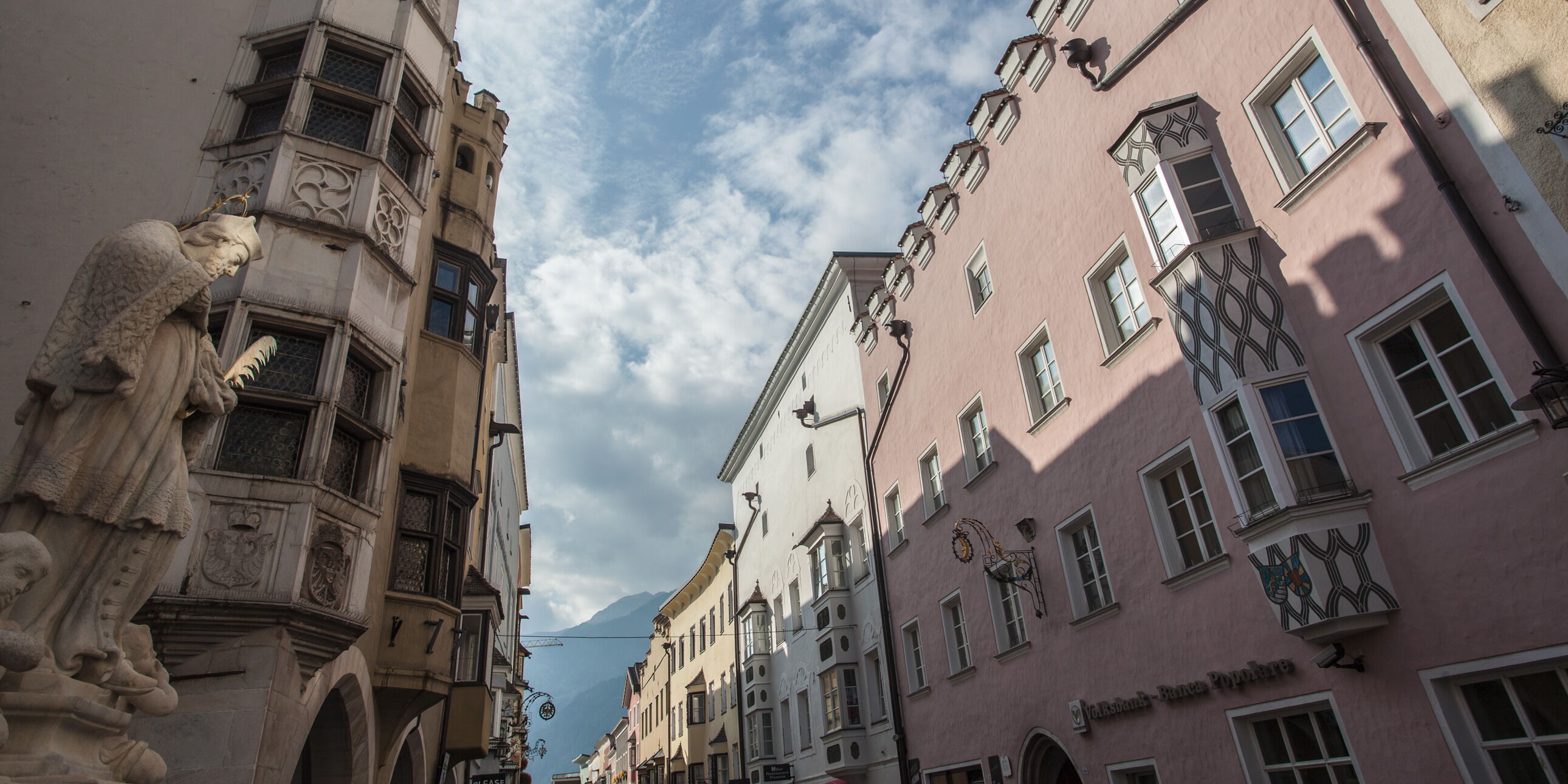Sterzing and the Fugger: silver and lead from Gossensass and from Schneeberg
On One of the Most Beautiful Streets in South Tyrol is a House of the Fuggers from Augsburg
The Fuggers of Augsburg were represented as mine owners near Sterzing beginning in 1524. Jakob Fugger “the Rich” purchased the first mine shares one year before his death. Soon the mining corporation in the mines around Sterzing took on a dominant position: the Fuggers steadily attained large portions of the mine shares in Schneeberg, in Pferch, Ridnaun, and Passeiertal, in Gossensaß and Grasstein, including several ore crates and two water powered stamping mills. The Fuggers had a mining presence near Sterzing longer than any of their other locations. At the beginning of 1663 the mining company, of which a house in Sterzing Neustadt recalls, gave up the last of it’s mining shares to Schneeberg.
Tip
Sterzing developed due to it’s geographical position as the central point in the Wipp valley and as a resting place before the Brenner Pass. The focal point of the historical town is the 46 meter high Zwölferturm tower, which separates the two historical quarters in the city center - the old and the new city. Attractions include the house facades with immured ore and reliefs recall the mining era. A further highlight is the gothic city hall, which demonstrates the wealth accumulated in mining.
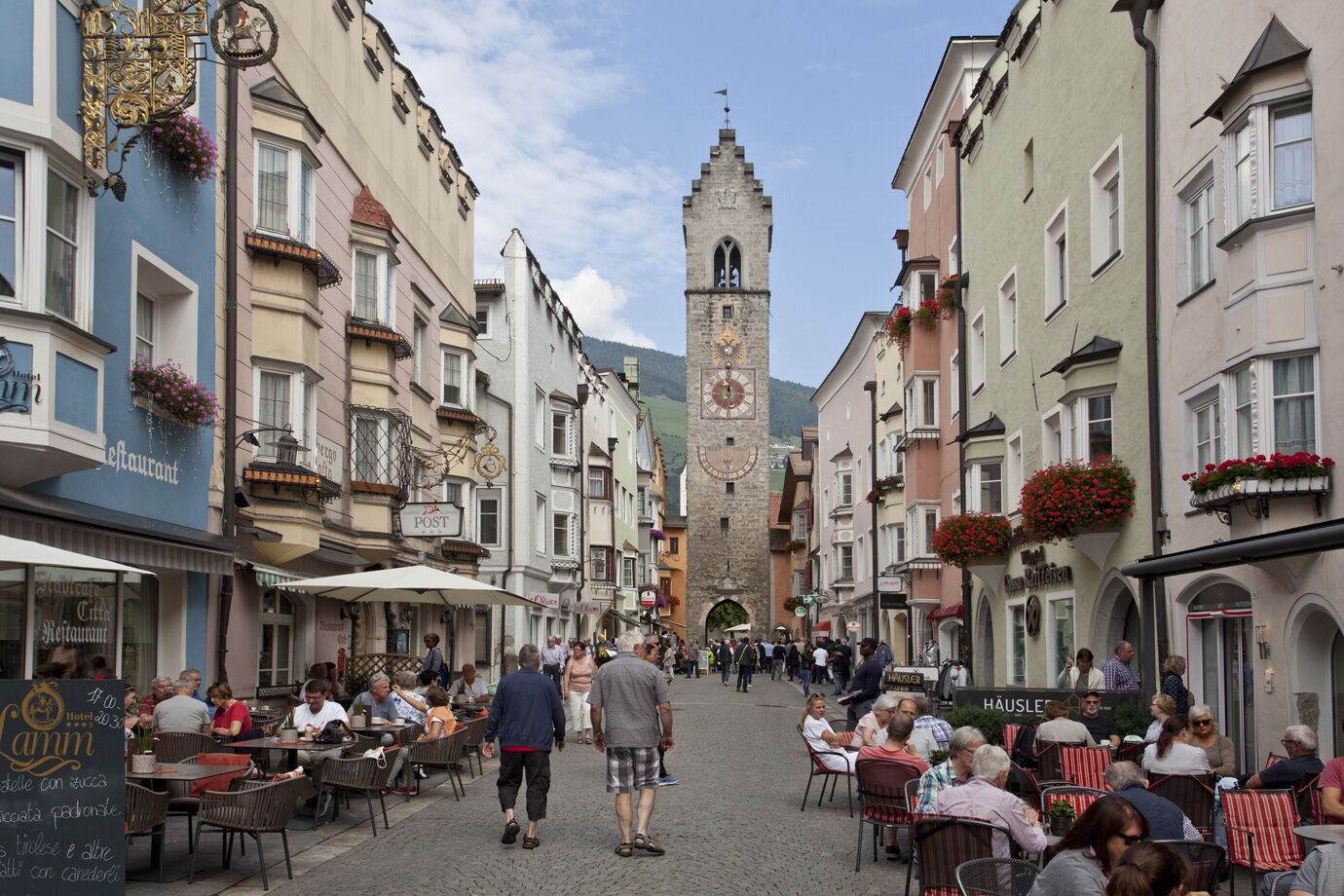
The mining district of Sterzing-Gossensass was one of the largest in Tyrol - with a special extension of around 2,400 square kilometers. Around 1540 it stretched from Schneeberg in Passier in the west to the Ridnauntal and Sterzing and to the area around Pfunders in the east. From Sterzing it leads to the district to the north through Gossensass into the Pferschtal valley as well as through the Brenner into the region around Navis, and in the south through Grasstein to the Mountains around Mühlbach and Schabs. The iron ore mining in Trens south of Sterzing is first mentioned around the year 1010. Silver from Schneeberg is already documented in 1237. Into the 15th century the core area for mining activity was not in Sterzing, but in Gossensass, where the mining judge had a post and had already created an organisational structure in 1427.
In 1524 Jakob Fugger “the Rich”, who first bought mining shares in Tyrol in 1522, purchased several mines in Schneeberg for the Augsburg mining company. In this district and in Gossensass, Melchior von Meckau, the Bishop of Brixen, became one of the largest mine owners, beginning in 1491. Just like the Fuggers, in the time around 1490, the Bishop was a mine owner in gold and silver mining near Gastein and Rauris.
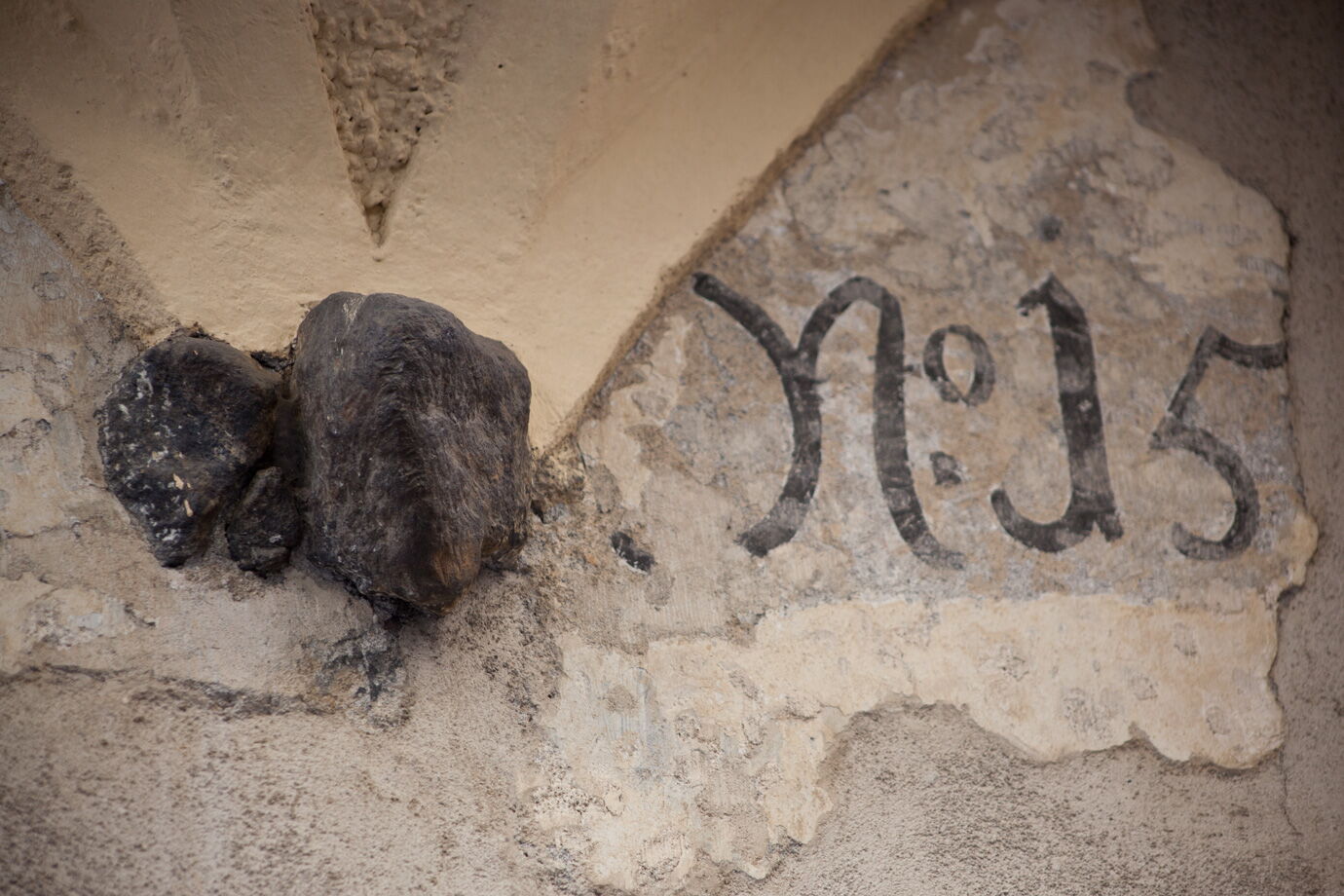
In 1496 he largely financed the Fugger’s start in the Hungarian mines near Neusohl as a silent partner. Melchior of Meckau, who also operated copper mines in Ahrntal near Taufers, had acquired 30 percent of all the mines in Schneeberg. The Bishop died in Rome in 1509 and the mines were put up for sale in 1528. Upon recommendation by the emperor, the mines went to the Fuggers. In 1533, the Augsburg mining company near Sterzing owned several hundred mines or mine shares, as well as countless ore deposits in Sterzing, Gossensass, Pflersch and Ridnauntal. Sorted and washed mineral ore was also temporarily stored there.
Around 1530, the company in Grasstein, only a few kilometers south of Sterzing, had a new smelting mill built with six ovens in order to avoid high transport costs to the smelting centers in the Inntal valley and also to save on taxes and fees. The prince in Tyrol, emperor Ferdinad I, bought the mining shares in Schwaz and in Gossensass-Sterzing from the Augsburg patrician Paul Herwart in 1558: thus a state-owned enterprise was formed. As a counter measure, the Fuggers founded the Augsburg business, the “Jenbacher corporation”with the Katzbeck from Schwaz, the Haug company, Landauer and Linck and the Augsburg mining company “Mathäus Manlichs Erben.” ( Manlich was the successor of the Fuggers in the lease of Neusohl copper, his son in law, Philipp Welser was also a partner). When the Fuggers gave up mining near Sterzing in 1663, they sold their last quarter shares in the mines at Schneeberg and pulled out of the mining courts in Gossensass-Sterzing permanently.

A Fugger House, Ore Nuggets and Miner’s Tools as Monuments of Wealthy Mine Owners in Sterzing
Even though the mines in Schneeberg - at an altitude of more than 2,000 meters - are several kilometers west of Sterzing, the importance the mining in the city on the Eisack river should not be underestimated. On several house facades, the embedded ore nuggets over the gothic doorways or bay windows and the arcades show that mine owners lived there. After the land register tax in 1540, 23 buildings of the 180 houses in the city were inhabited by mine owners (like the mining court house near the Zwölferturm tower) or had a connection to mining. A deed from Sterzing in the year 1626 mentions “the Fugger dwelling.” Across from the gothic court- house, a sign marks the premises “Neustadt 24” as a house of Fugger, which also has an ore nugget embedded over the portal of the entrance. This building once belonged to the mine owner from Schwaz, Hans Stöckl. In 1553 it was sold to Manlich from Augsburg and a mining entrepreneur from Schwaz, Dreiling. Beginning in 1558 the house was set up for “Pfennwerthandel”. Then, in the early 17th century, the “Jenbacher Corporation” took over. When all of the other companies withdrew in 1578, the building belonged solely to the Fuggers. The sign on the facade of the house states that the Fuggers only relinquished the property to the state mining organisation in 1681.
An ore nugget was also embedded on the bay window of the house (Neustadt 31) that once belonged to the Flamm family, property owners from Sterzing. The fragments of gothic facade paintings, floral motives, painted arches and porticos on the exterior as well as a noble interior demonstrate their wealth. The tools - crossed chisel and hammer, the typical work instruments for the scraping techniques in the ore mines - are evident on the houses in Sterzing. The symbol known around the world for mining is also found under the carvings on the pews in the parish church “To Our Lady in Moos” in Sterzing built in 1497, as well as a coat of arms on the chancel arch there. Names and coats of arms of land owning families from Sterzing are seen on the columns of the central nave. Those families provided most of the finances to build this late gothic, three naved hall church.
The well preserved 26 meter high Bergfried in the ‘Ruine Straßberg’ lies north of the Village of Sterzing. This feudal castle was first mentioned in 1280. It lies on the Brenner street and served as the local office of the territorial administration. From the 14th to the 16th century the Straßberg fortress was fiefdom of the Frundsbergs in Schwaz, and for a short time, from 1619 until 1628, it was the property of the Fuggers through mortgage ownership.
Sights, Current Exhibitions and Tips

The State Mining Museum in Ridnaun
The State Mining Museum in Ridnaun is located 20 minutes from the town center of Sterzing. This mining museum is a monument to the industrial age and at the same time it is a reminder of the mining industry in the age of the Fuggers - and on the largest mining settlement in Europe.
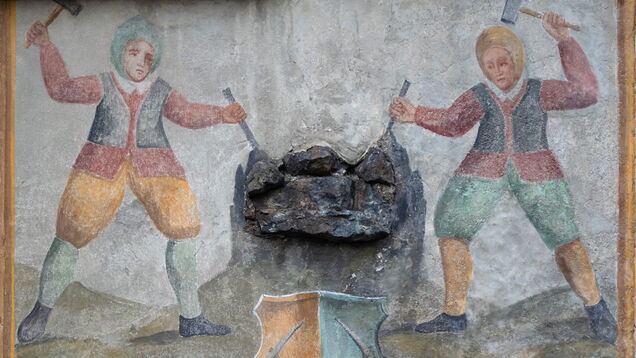
The Mining Court House in Gossensass
Well into the 15th century the center for mining ore in the Brenner area was not in Sterzing, but rather in Gossensass. That is where the mining court had their offices. The mining court of Sterzing-Gossensass became one of the largest in Tyrol. The mining court house in the center of Gossensass can still be seen today.
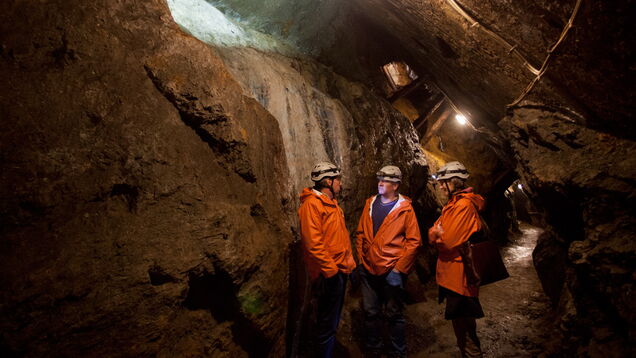
Copper from Klausen: the Mines in Villanders
Klausen is located around 40 kilometers south of Sterzing. From there it is ten kilometers up hill to Villanders. A tour in the copper mines there informs visitors about the golden age of mining, a 25 kilometer long tunnel system and the most prominent mine owners of their time-the Fuggers.
